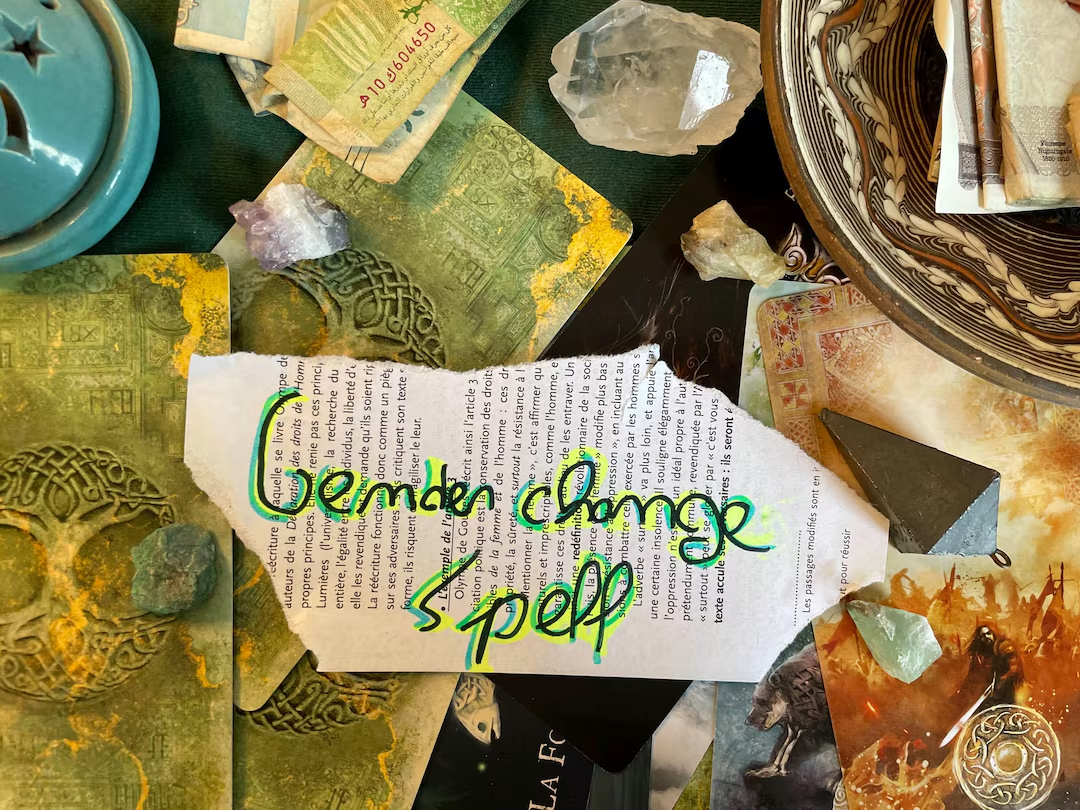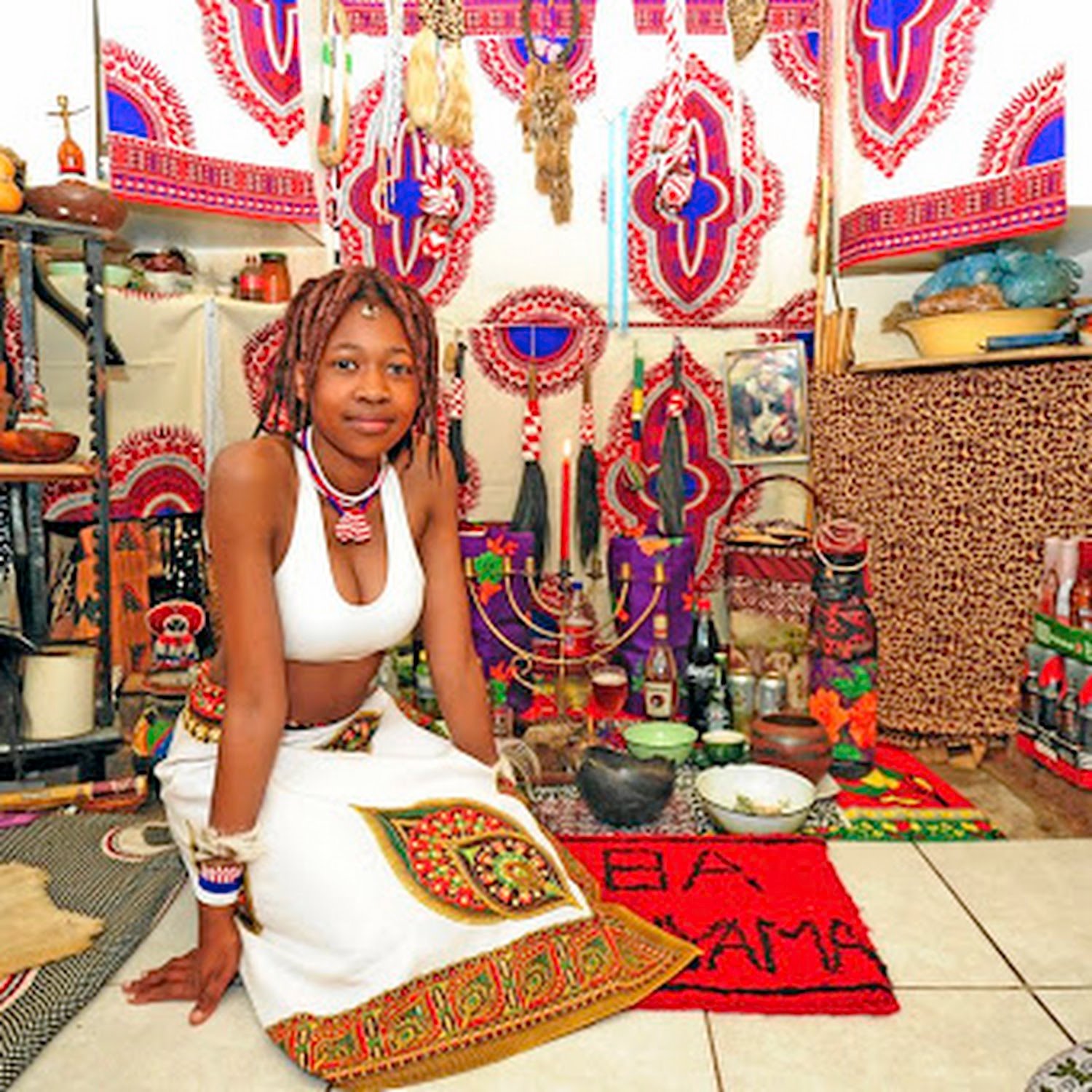Introduction to Gender Transformation Spells
Gender transformation spells are a fascinating aspect of magical practices that have captivated the imagination across various cultures and belief systems. These spells are thought to facilitate a change in one’s gender identity or embodiment, often aligning the physical self with one’s innermost perception of gender. The origins of these spells can be traced back to ancient civilizations where the fluidity of gender was acknowledged, such as in certain Indigenous cultures or within the broader tapestry of Pagan traditions. In many instances, gender transformation spells were believed to invoke deities or entities associated with fertility, creativity, and transformation, highlighting the spiritual significance attributed to gender fluidity.
Throughout history, the perception of gender transformation spells has varied widely. In some cultures, these practices were revered as sacred rites, symbolizing the inherent complexity of human identity, while in others, they were met with skepticism or even hostility. The duality of acceptance and rejection reflects the ongoing societal struggle surrounding gender identity and expression. Historical accounts suggest that individuals sought these spells for various reasons, often driven by an innate desire for self-discovery, personal empowerment, or a quest for authenticity in a society that may not fully embrace their identities.
In contemporary contexts, the resurgence of interest in gender transformation spells can be linked to broader discussions on gender identity and rights. Many individuals are drawn to these magical practices as a means of exploring their own identities, seeking validation, or as tools for personal growth and transformation. As society continues to evolve in its understanding of gender, the practice of gender transformation spells serves as a compelling reminder of the rich interplay between magic, belief, and the diverse spectrum of human experience.
Historical Perspectives on Gender and Magic
The intersection of gender and magic has a rich and varied history across numerous cultures and societies. Throughout the ages, magic has offered a transformative avenue for expressing gender fluidity and challenging rigid gender norms. In ancient civilizations, practices such as shamanism often included figures who embodied both masculine and feminine characteristics, highlighting a more nuanced understanding of gender identity. These shamans served as mediators between the spiritual and physical realms, reflecting a societal recognition of non-binary identities long before contemporary discussions emerged.
In ancient Rome and Greece, practitioners of magic, including witches and sorceresses, wielded considerable power, often associated with deities that transcended traditional gender roles. Figures such as Circe and Medea in literature not only showcased women’s roles in magic but also represented a fluidity of gender and identity. These mythological characters engaged in transformation spells, blurring the lines between male and female, thus illustrating how magic was deeply interwoven with concepts of gender during those times.
<pfurthermore, a="" accused="" ages="" allowing="" and="" around="" as="" both="" brought="" change="" characters="" could="" depicted="" during="" european="" fascination="" fears="" fluid="" folklore="" forefront.="" form,="" frequently="" from="" gender="" hunts="" identities.="" in="" included="" insight="" into="" literary="" middle="" narrative="" notions="" of="" often="" order.="" p="" particular,="" patriarchal="" perceived="" periods="" politics="" renaissance,="" resulting="" shape-shifting,="" societal="" source="" suggesting="" surrounding="" texts="" that="" the="" their="" these="" threat="" to="" transformation="" trepidation.
As we explore the historical underpinnings of gender transformation within the realm of magic, it becomes evident that the duality of gender was recognized and often celebrated in myriad forms. These historical practices set the foundation for modern interpretations of gender transformation spells, continuing the dialogue around gender fluidity and identity through magic.
Types of Gender Transformation Spells
Gender transformation spells encompass a diverse range of practices aimed at facilitating personal transformation concerning one’s gender identity. These spells can be categorized into several distinct types, each addressing various aspects of gender transformation. Understanding these categories provides insight into the methodologies, rituals, and ingredients typically associated with them.
One prominent category includes spells focused on physical change. These rituals aim to invoke shifts in the physical body, aligning one’s external appearance with their internal gender identity. Common practices involve the use of specific herbs, crystals, and incantations that are believed to attract energy conducive to transformation. For instance, many practitioners might utilize ingredients known for their metaphysical properties, such as moonstones for femininity or tiger’s eye for masculinity. Such spells often require the individual to engage in a series of rituals, including visualization techniques and daily affirmations, which reinforces the desired physical transformation.
Emotional transformation spells represent another significant category. These rituals focus on shifting an individual’s emotional state and self-perception. By channeling energies that encourage self-acceptance and confidence, practitioners can foster resilience and emotional readiness during their transition. Ingredients often include calming herbs like lavender, paired with affirmations that promote self-love and acceptance, integral to the emotional work tied to gender transformation.
Lastly, broader societal perception spells aim to influence how one is perceived by others. These types of spells often involve community rituals or public displays of identity that encourage acceptance and recognition of one’s chosen gender. Common practices may include collaborative ceremonies or community offerings that symbolize unity and acceptance. By harnessing communal energy, practitioners seek to shift societal attitudes around gender identity and transformation.
Overall, the variety of gender transformation spells reflects the multifaceted journey of individuals exploring and affirming their gender identities, each supported by specific rituals, ingredients, and methodologies designed to facilitate change.
Cultural Variations and Beliefs
The concept of gender transformation spells is deeply rooted in various cultural beliefs and practices around the world. Each culture interprets gender fluidity and transformation through its unique lens, shaped by societal norms, historical contexts, and spiritual beliefs. In many indigenous cultures, for instance, the idea of dual-gender identities is often celebrated, with individuals possessing both masculine and feminine traits being revered as two-spirited, or having a special connection to the spirit world. This recognition highlights a cultural acceptance of gender fluidity that diverges markedly from the binary understanding prevalent in some Western societies.
Further, practices involving gender transformation spells can often be found in religious or mystical traditions. In certain African and Caribbean religions, rituals may involve the invocation of spirits or ancestors to transform one’s gender identity as part of personal development or healing processes. These transformations are not merely superficial; they are deeply symbolic, often aimed at aligning the individual with their authentic self. Similarly, in some branches of Eastern spirituality, gender is often seen as a representation of the yin and yang, where both energies coexist within every individual, prompting the use of rituals aimed at harmonizing these opposing forces.
<pmoreover, a="" acceptance,="" acceptance.="" adapt="" adaptations="" ancient="" and="" as="" awareness="" beliefs="" blending="" celebration="" change.="" contemporary="" context.
Modern-Day Practices and Adaptations
In recent years, the interest surrounding gender transformation spells has grown significantly within the context of modern witchcraft and alternative spiritual practices. Contemporary practitioners often reinterpret ancient spells, adapting them to resonate with today’s cultural and societal changes. The accessibility of information through the internet and social media has played a crucial role in this transformation. Online platforms allow practitioners to share insights and experiences, creating a sense of community among those exploring gender fluidity and transformation.
Technology has enabled a diverse range of interpretations and adaptations of traditional spells. Many practitioners utilize apps, online forums, or social media groups to exchange knowledge, techniques, and personal experiences related to gender transformation. This digital landscape fosters collaboration and innovative thinking, leading to the development of new modern spells that can be tailored to individual experiences of gender identity. Through shared resources, practitioners can access various rituals, guided visualizations, and affirmations that support their journey.
Social media platforms have also amplified the voices of marginalized communities, contributing to a broader understanding of gender identity and transformation. Influencers and practitioners openly discuss their practices, beliefs, and personal narratives, making gender transformation spells more relatable and relevant. This increasing visibility helps to demystify these practices, making them more accessible to those who may feel disconnected from traditional witchcraft. Furthermore, modern adaption may also involve incorporating elements from popular culture that resonate with contemporary audiences, enriching the practice with new layers of meaning.
Ultimately, the intersection of ancient wisdom with modern technology and social norms cultivates a dynamic and evolving landscape for those interested in gender transformation spells. Practitioners today are not merely recreating historical rituals; they are reshaping them to align with their personal experiences and societal shifts, thereby ensuring these traditions remain relevant in our rapidly changing world.
Personal Experiences and Testimonials
Many individuals have turned to gender transformation spells in search of personal alignment with their identity. These spells, often rooted in ancient traditions, have found relevance in contemporary contexts, appealing to a diverse spectrum of people. Through their narratives, we can glean not only the reasons behind their pursuit of transformation but also the profound emotional and psychological impacts they experience.
One individual, who identifies as a male-to-female transgender person, shared that engaging with a gender transformation spell was a pivotal moment in her life. She expressed that it was not simply about physical change; rather, it was an essential step towards manifesting her true self. “The spell helped me visualize and connect with my inner femininity,” she recounted, highlighting how the ritual provided her with a sense of empowerment and reinforced her self-acceptance. This transformation was not without challenges, yet she credits the spell with instilling a deep sense of belonging within her skin.
Conversely, a non-binary individual discussed their experience with gender transformation spells as a means of exploring fluidity in identity. The participant stated, “I was drawn to the spells as a way to embrace my multifaceted self. The magic served as a catalyst, allowing me to navigate through societal norms and assert my uniqueness.” Their journey showcases that gender transformation spells are not limited to binary notions; they can also accommodate diverse identities, offering a safe space to explore one’s truth.
Further testimonials highlight a recurring theme: the profound shift in self-perception and societal interactions following their engagement with such spells. Some participants report increased confidence and a stronger sense of community, while others share stories of acceptance and love from those around them. Through these personal experiences, it becomes evident that gender transformation spells can provide not only magical empowerment but also a vital connection to one’s authentic self and a supportive community.
Ethical Considerations in Gender Transformation Magic
The practice of gender transformation magic raises several ethical considerations that practitioners must thoughtfully navigate. Central to these considerations is the necessity of informed consent. Consent is an essential principle in any magical work, especially when it involves altering an individual’s identity or physical form. Practitioners should prioritize obtaining clear and comprehensive consent from individuals seeking transformation, ensuring they fully understand the implications and potential outcomes of the spell. This approach fosters a respectful and responsible practice of magic.
Another crucial aspect is the respect for diverse gender identities. Gender transformation spells exist within a broader cultural and societal context where identities are unique and fluid. Magic practitioners must acknowledge and honor the varied experiences of individuals who identify outside of the traditional binary understanding of gender. This acknowledgment is not only ethical but also enhances the efficacy and authenticity of the magical work. Failing to respect diverse gender identities can lead to harmful practices and reinforce existing societal prejudices.
Additionally, practitioners of gender transformation magic hold a responsibility toward their communities. This responsibility entails creating a supportive atmosphere that recognizes the autonomy of individuals seeking transformation. Communities should be spaces where practitioners engage in honest discussions about the motivations behind transformation spells, addressing any potential exploitation or manipulation. Such engagement is vital in fostering a culture of accountability and mutual respect within the magical community.
In summary, the ethical dimensions of gender transformation magic are complex and require careful consideration. Practitioners must emphasize informed consent, respect for diverse gender identities, and responsibility toward their communities to ensure that their practices are both respectful and empowering.
Best Practices for Casting Gender Transformation Spells
Casting gender transformation spells involves a thoughtful approach that includes preparations, setting clear intentions, and ensuring emotional and mental readiness. It is essential for practitioners to create a conducive environment that fosters focus and reflection. Before attempting any spells, it is advisable to conduct thorough research about the types of transformation spells available, their historical context, and their ethical implications. This foundational knowledge can empower individuals in their practice and motivate them to set their intentions wisely.
Preparation is a crucial step in the process. This may involve cleansing the space where the spell will be cast to eliminate any negative energies. Practitioners often utilize tools such as candles, crystals, herbs, or incense that are thought to enhance the effectiveness of the spell. It is helpful to choose items that resonate personally with the individual’s intention and desired transformation. Moreover, incorporating rituals like meditation or visualization can help align one’s energy with the objectives of the spell.
Setting intentions plays a pivotal role in the effectiveness of gender transformation spells. Clear and precise intentions help direct the energy towards a specific goal. It is important to write down the intentions in positive language, focusing on what one wishes to achieve rather than what one wants to avoid. Keeping a journal can serve as an excellent tool for tracking progress and reflecting on feelings throughout the process.
Emotional and mental readiness cannot be overlooked. Exploring personal motivations and potential ramifications before casting a spell allows practitioners to engage in informed decision-making. Practicing self-compassion, patience, and openness to outcomes cultivates a supportive mindset. Finally, joining communities, forums, or discussions with experienced practitioners can provide valuable insights and support. By adhering to these best practices, individuals can cast gender transformation spells thoughtfully and effectively.
Conclusion: The Future of Gender Transformation Spells
The contemplation surrounding gender transformation spells is indicative of the evolving dialogue regarding gender and identity in contemporary society. As societal norms and understandings of gender continue to shift, so too does the landscape of magical practices associated with gender transformation. These spells, which historically have often been steeped in myth and folklore, are beginning to intersect with modern conceptions of gender fluidity and non-binary identities. This intersection presents a fertile ground for both practitioners and enquirers of magic to explore how these ancient spells can be recontextualized within a modern framework.
As awareness grows surrounding the complexities of gender identity, it is likely that the future of gender transformation spells will reflect these changes. Practitioners may increasingly find inspiration in the principles of inclusivity and acceptance, adapting traditional spells to celebrate diverse experiences of gender. Moreover, the integration of contemporary understandings into these practices can help to dismantle long-held stigma surrounding witchcraft and gender non-conformity. The conversations that are emerging in society about the spectrum of gender will inevitably shape the rituals and methods employed in these transformative spells.
Furthermore, the potential application of gender transformation spells may extend beyond personal experiences of identity, encouraging broader discussions about the role of magic in social change. As individuals engage with these practices, they may foster communities dedicated to supporting one another in their journeys of identity. Thus, the future of gender transformation spells is not just a mere reflection of magic; it embodies the ongoing evolution of societal norms and the drive towards a more inclusive understanding of gender.









